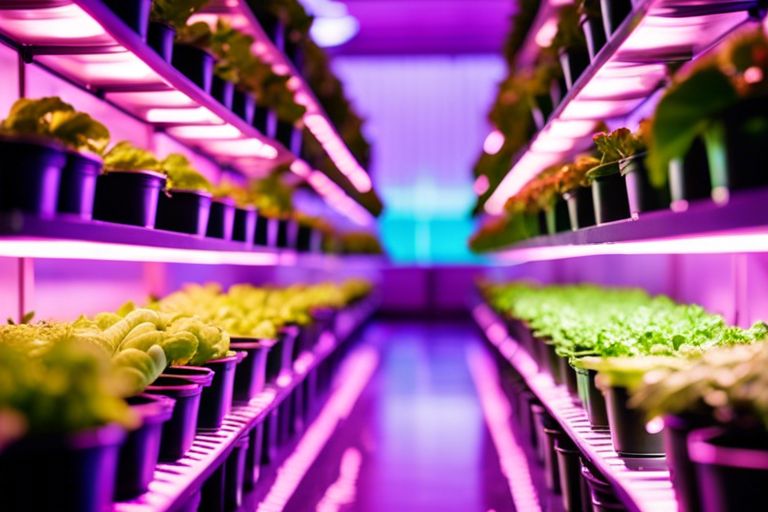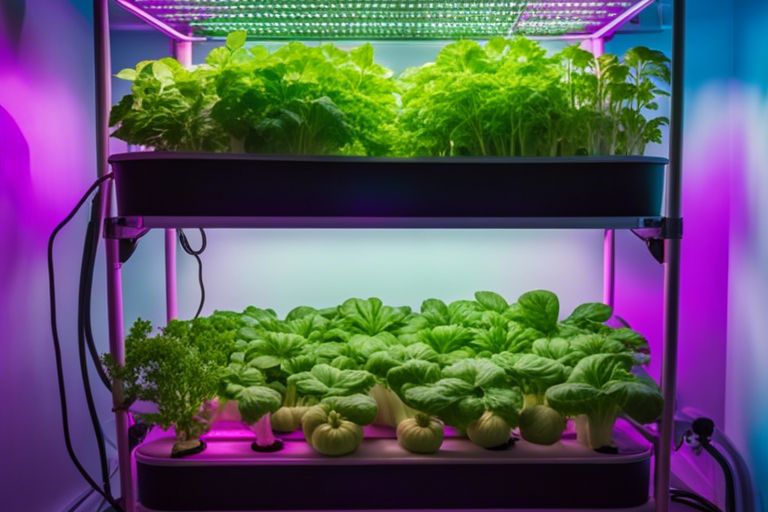Most hydroponic growers are aware of the benefits of using Dutch buckets in their setups. These ingenious containers provide efficient nutrient delivery directly to the roots of plants, resulting in increased growth rates and yields. However, harnessing the full potential of Dutch buckets requires proper setup, maintenance, and monitoring. In this blog post, we’ll probe into the key advantages of incorporating Dutch buckets into your hydroponic system and provide important tips for maximizing their effectiveness. Whether you’re a beginner or experienced grower, unlocking the capabilities of Dutch buckets can take your hydroponic operation to the next level.
Key Takeaways:
- Maximize Space Efficiency: Dutch buckets allow for a compact and efficient use of space in your hydroponic setup, ideal for those with limited space.
- Great for Larger Plants: Dutch buckets are suitable for growing larger plants such as tomatoes, cucumbers, and peppers, providing ample support and room for growth.
- Easy to Monitor and Maintain: The design of Dutch buckets makes it easy to monitor the water and nutrient levels, as well as maintain the system by checking for any issues or blockages.
- Customizable Nutrient Solutions: Dutch buckets allow for easy customization of nutrient solutions, tailored to the specific needs of different plants and growth stages.
- Enhanced Drainage and Aeration: The design of Dutch buckets promotes optimal drainage and aeration for the roots, reducing the risk of waterlogging and promoting healthy root development.

Understanding Dutch Buckets
What are Dutch Buckets?
Some of the most common tools used in hydroponic systems are Dutch Buckets. These are individual containers that hold plants and a growth medium, connected to a central reservoir through a drip system. Each bucket has a drainage system to prevent waterlogging and maintain optimal growing conditions for plants.
Advantages of Using Dutch Buckets
Buckets are highly versatile and suitable for a variety of plants, making them a popular choice among hydroponic growers. One of the key advantages of using Dutch Buckets is their efficiency. The individualized nature of each bucket allows for customized care for different plants, maximizing growth potential. Additionally, the ease of installation and maintenance makes Dutch Buckets an attractive option for both beginners and experienced growers.
Setting Up Your Dutch Bucket System
There’s no better way to kickstart your hydroponic journey than by setting up your Dutch bucket system! If you’re new to this, you can check out How to Build a Simple Hydroponic Dutch Bucket System for a detailed guide.
Essential Components and Materials
Setting up a Dutch bucket system requires a few imperative components and materials. You’ll need Dutch buckets, a water reservoir, a submersible pump, distribution tubing, grow media, nutrient solution, and plants. It’s crucial to ensure that all components are of high quality to guarantee the success of your hydroponic setup.
Step-by-Step Assembly Instructions
When assembling your Dutch bucket system, it’s imperative to follow a structured approach to ensure everything is set up correctly. Below are the step-by-step instructions broken down into two columns for easy reference:
Step 1: Install the submersible pump
Step 2: Connect the distribution tubing and secure it in place
Step 3: Set up the Dutch buckets and fill them with grow media
Step 4: Connect the Dutch buckets to the distribution tubing
Step 5: Fill the water reservoir with the nutrient solution
Step 6: Adjust the flow rate and monitor the system regularly
Following these steps diligently will ensure a smooth setup process and optimal functioning of your Dutch bucket system.
Managing Your Dutch Bucket System
Once again, if you are looking to maximize the potential of your hydroponic setup, incorporating Hydroponic Dutch Buckets can be a game-changer. These systems offer a versatile and efficient way to grow a wide variety of crops in a controlled environment.
Nutrient Solutions and pH Balance
With proper nutrient solutions and pH balance, you can ensure that your plants receive the vital elements they need for healthy growth. Monitoring and adjusting the nutrient levels and pH of your Dutch bucket system regularly is crucial for optimal plant development. Remember to follow manufacturer’s guidelines for specific crops and adjust accordingly based on plant growth stages.
Troubleshooting Common Issues
Common issues in Dutch bucket systems include clogged lines, nutrient deficiency, and pH imbalance. A proactive approach to troubleshooting is vital to prevent these problems from affecting your plants. Regularly check for clogs, monitor nutrient levels, and pH balance to nip potential issues in the bud before they escalate.
A quick response to any signs of distress in your plants such as wilting leaves or stunted growth can help you identify and rectify the issue promptly. Addressing problems early on can prevent irreparable damage to your crop and ensure a successful harvest.

Maximizing Yields with Dutch Buckets
Optimizing Plant Spacing and Arrangement
Not all plants thrive in the same conditions, and spacing plays a crucial role in the growth and productivity of your hydroponic system. With Dutch Buckets, it is crucial to optimize plant spacing and arrangement to ensure each plant receives adequate nutrients and space to flourish. Proper spacing helps prevent overcrowding, which can lead to competition for resources and stunted growth.
Advanced Techniques and Tips
With Dutch Buckets, you have the opportunity to implement advanced techniques and tips to further maximize your yields. By incorporating innovative methods, you can enhance the efficiency and productivity of your hydroponic setup. From nutrient management to environmental controls, there are various strategies to explore for achieving optimal results.
- Techniques
1. Nutrient Film Technique (NFT) 2. Deep Water Culture (DWC)
Techniques: Implementing advanced techniques in your Dutch Bucket system can significantly impact the overall yields and health of your plants. By exploring methods like the Nutrient Film Technique (NFT) and Deep Water Culture (DWC), you can fine-tune your hydroponic setup for optimal growth and productivity.
- Plant
1. Choose compatible plant varieties 2. Monitor pH and nutrient levels regularly
Conclusion
Upon reflecting on the benefits and potential of Dutch Buckets in hydroponic setups, it is clear that this system offers a versatile and efficient way to maximize plant growth. With the ability to control nutrient delivery, water oxygen levels, and root aeration, Dutch Buckets provide an ideal environment for plants to thrive. By implementing Dutch Buckets in your hydroponic setup, you can unlock the full potential of your plants and ensure a bountiful harvest. Consider integrating this innovative system into your growing operation and see the incredible results for yourself.
FAQ
Q: What are Dutch Buckets in hydroponics?
A: Dutch Buckets are a type of hydroponic system that consists of individual buckets filled with growing media, such as perlite or coconut coir, where plants are grown. Each bucket is connected to a reservoir that delivers nutrient-rich water directly to the plant roots.
Q: What are the advantages of using Dutch Buckets in hydroponics?
A: Dutch Buckets allow for efficient water and nutrient delivery directly to the plant roots, leading to improved growth and yield. They are also versatile and can be used for a wide range of crops, making them ideal for commercial hydroponic operations.
Q: How do you set up Dutch Buckets in a hydroponic system?
A: To set up Dutch Buckets, you will need a sturdy support structure to hold the buckets, a nutrient reservoir, a water pump, and a distribution system to deliver water to each bucket. Simply fill the buckets with your chosen growing media and plant your crops.
Q: What crops are best suited for growing in Dutch Buckets?
A: Dutch Buckets are well-suited for growing vine crops such as tomatoes, cucumbers, and peppers. Leafy greens, strawberries, and herbs also do well in Dutch Buckets. Ultimately, the system’s versatility allows for a wide range of crops to be grown.
Q: How do you maintain Dutch Buckets in a hydroponic setup?
A: Regular maintenance of Dutch Buckets involves monitoring nutrient levels, pH levels, and water temperature. Inspect the system for any clogs or leaks, and clean the buckets and tubing regularly to prevent algae or fungal growth. Additionally, prune plants as needed to maintain optimal growth.
